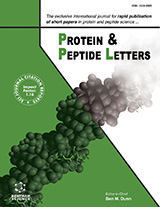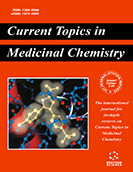Abstract
Prohormone or proprotein convertases (PC2) are members of the subtilisin family of serine proteases. They are involved in the activation of precursor molecules by endoproteolytic cleavage at basic amino acid residues within the general motif (K/R)-(X)n- (K/R)2, where n is 0, 2, 4 or 6 and X is usually not Cys. Among the members of this prohormone convertase family, Neuroendocrine Convertase-2 (NEC-2) is regarded as one of the important proteins involved in the maturation of many precursor proteins. Being widely distributed in the neuroendocrine cells, these proteins play a vital role in causing malignant gliomas. They can serve as important drug targets in the treatment of cancers. In the present study, a 3D model of NEC-2 was generated using homology modeling. The model was optimized by a brief energy minimization in CHARMM and dynamics simulation of 250ps in MOE. The validation results of PROCHECK and Profile 3D show that the stereochemical quality of the model is good. The Cα backbone of the template and the target (NEC-2) when superimposed showed RMSD of 0.39Å. The model showed Asp51, His92 and Ser268 in the active site as seen in most of the PC2 members. The NEC-2 structure differs from that of furin at the catalytic pocket region with relevance to the amino acid composition which can be exploited for the design of specific inhibitors towards NEC-2.
Keywords: Proprotein convertase2, neuroendocrine cells, NEC-2, malignant gliomas, homology modeling, energy minimization
Protein & Peptide Letters
Title: Structure Prediction of Neuroendocrine Convertase -2: A Potential Target in Various Cancers
Volume: 16 Issue: 4
Author(s): Polamarasetty Aparoy, Munmun Chatterjee, Lalitha Guruprasad and Pallu Reddanna
Affiliation:
Keywords: Proprotein convertase2, neuroendocrine cells, NEC-2, malignant gliomas, homology modeling, energy minimization
Abstract: Prohormone or proprotein convertases (PC2) are members of the subtilisin family of serine proteases. They are involved in the activation of precursor molecules by endoproteolytic cleavage at basic amino acid residues within the general motif (K/R)-(X)n- (K/R)2, where n is 0, 2, 4 or 6 and X is usually not Cys. Among the members of this prohormone convertase family, Neuroendocrine Convertase-2 (NEC-2) is regarded as one of the important proteins involved in the maturation of many precursor proteins. Being widely distributed in the neuroendocrine cells, these proteins play a vital role in causing malignant gliomas. They can serve as important drug targets in the treatment of cancers. In the present study, a 3D model of NEC-2 was generated using homology modeling. The model was optimized by a brief energy minimization in CHARMM and dynamics simulation of 250ps in MOE. The validation results of PROCHECK and Profile 3D show that the stereochemical quality of the model is good. The Cα backbone of the template and the target (NEC-2) when superimposed showed RMSD of 0.39Å. The model showed Asp51, His92 and Ser268 in the active site as seen in most of the PC2 members. The NEC-2 structure differs from that of furin at the catalytic pocket region with relevance to the amino acid composition which can be exploited for the design of specific inhibitors towards NEC-2.
Export Options
About this article
Cite this article as:
Aparoy Polamarasetty, Chatterjee Munmun, Guruprasad Lalitha and Reddanna Pallu, Structure Prediction of Neuroendocrine Convertase -2: A Potential Target in Various Cancers, Protein & Peptide Letters 2009; 16 (4) . https://dx.doi.org/10.2174/092986609787848018
| DOI https://dx.doi.org/10.2174/092986609787848018 |
Print ISSN 0929-8665 |
| Publisher Name Bentham Science Publisher |
Online ISSN 1875-5305 |
 6
6
- Author Guidelines
- Bentham Author Support Services (BASS)
- Graphical Abstracts
- Fabricating and Stating False Information
- Research Misconduct
- Post Publication Discussions and Corrections
- Publishing Ethics and Rectitude
- Increase Visibility of Your Article
- Archiving Policies
- Peer Review Workflow
- Order Your Article Before Print
- Promote Your Article
- Manuscript Transfer Facility
- Editorial Policies
- Allegations from Whistleblowers
Related Articles
-
Antibody Engineering for Targeted Therapy of Cancer Recombinant Fv-Immunotoxins
Current Pharmaceutical Biotechnology Lactate Transporters and pH Regulation: Potential Therapeutic Targets in Glioblastomas
Current Cancer Drug Targets Pleiotropic Effects of Cathepsin D
Endocrine, Metabolic & Immune Disorders - Drug Targets Anticancer Agents Derived from Natural Products
Mini-Reviews in Medicinal Chemistry Natural Plant Extracts as Potential Therapeutic Agents for the Treatment of Cancer
Current Topics in Medicinal Chemistry MiRNA-29: A microRNA Family with Tumor-Suppressing and Immune-Modulating Properties
Current Molecular Medicine Conjugation Approaches for Construction of Aptamer-Modified Nanoparticles for Application in Imaging
Current Topics in Medicinal Chemistry Delineation of Current Development of Antimitotic Compounds Targeting Cytoskeletal Protein Tubulin and Microtubule in the Cancer Therapy
Current Chemical Biology Peripheral Benzodiazepine Receptor (PBR) New Insight in Cell Proliferation and Cell Differentiation Review
Current Clinical Pharmacology New Perspective on the Dual Functions of Indirubins in Cancer Therapy and Neuroprotection
Anti-Cancer Agents in Medicinal Chemistry Matrix Metalloproteinase Inhibitors as Prospective Agents for the Prevention and Treatment of Cardiovascular and Neoplastic Diseases
Current Topics in Medicinal Chemistry A Retrospective Study on the Incidence of Seizures among Neurosurgical Patients Who Treated with Imipenem/Cilastatin or Meropenem
Current Pharmaceutical Biotechnology Chemical Modifications of Two Polysaccharides as Drug Carriers
Current Organic Synthesis Tumor Vasculature Targeting Through NGR Peptide-Based Drug Delivery Systems
Current Pharmaceutical Biotechnology Applications of Muscle Electroporation Gene Therapy
Current Gene Therapy Oncolytic HSV-1 Virotherapy: Clinical Experience and Opportunities for Progress
Current Pharmaceutical Biotechnology Translocator Protein as a Promising Target for Novel Anxiolytics
Current Topics in Medicinal Chemistry Receptor Tyrosine Kinases Take a Direct Route to Mitochondria: An Overview
Current Protein & Peptide Science Strategies to Overcome or Circumvent P-Glycoprotein Mediated Multidrug Resistance
Current Medicinal Chemistry Novel Phospholipid-Based Labrasol Nanomicelles Loaded Flavonoids for Oral Delivery with Enhanced Penetration and Anti-Brain Tumor Efficiency
Current Drug Delivery

















.jpeg)








